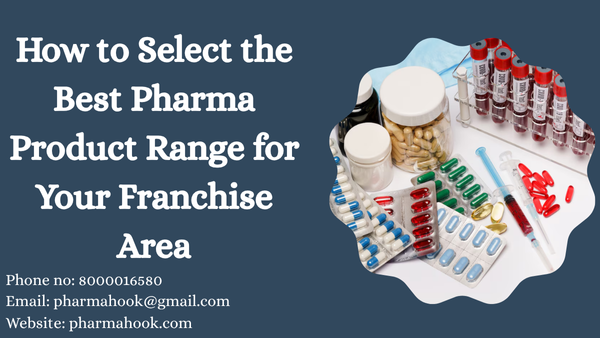
How to Select the Best Pharma Product Range for Your Franchise Area
🔍 Why Product Selection Matters
Your product range will define:
-
The customer segment you target (general physicians, pediatricians, dermatologists, etc.)
-
Your sales potential
-
Your competition level
-
Your brand identity in the local market
Choosing the wrong range can lead to unsold stock, poor doctor response, and low profit margins.
✅ Step-by-Step Guide to Choosing the Best Product Range
1. Study the Local Market Demand
Before anything else, analyze:
-
Common diseases and seasonal illnesses in your area
-
Popular medicine categories (e.g., antibiotics, painkillers, diabetic care)
-
Doctor specialization in your city/town
🧠 Example: In a metro city, derma and cosmetic ranges may sell better. In a rural area, general medicines and antibiotics might be in higher demand.
2. Identify the Doctor Network You Can Build
Ask yourself:
-
Do I have access to general physicians, pediatricians, or specialists?
-
What kind of prescriptions do they write?
-
Which products do they commonly recommend?
💡 Tip: Match your product line to the preferences of your doctor network for faster conversions.
3. Choose Between General vs Specialized Ranges
General Range:
-
High-volume products (antibiotics, painkillers, cough syrups)
-
Lower margins, but easy to sell
Specialized Range:
-
Derma, gynae, ortho, cardiac-diabetic, pediatric, neuro, etc.
-
Higher margins, more loyalty, but requires doctor relationship
🎯 Choose based on your market knowledge and sales team capabilities.
4. Evaluate Product Profitability and Price Points
Ask the pharma company for:
-
Product MRP and net rates
-
Profit margin per product
-
Scheme offers and promotional material
🧾 Tip: Choose products with high rotation, stable demand, and good profit margins.
5. Check for Monopoly Rights
Always confirm:
-
If the company offers monopoly rights in your area
-
Whether that product range is already being sold locally by others
📍 Why it matters: Exclusive rights mean no internal competition and stronger doctor relationships.
6. Start with a Balanced Portfolio
Include a mix of:
-
Fast-moving general products
-
1–2 niche items with higher margin
-
Add-ons like protein powders, injectables, or OTC products
📦 Suggested starter pack:
-
8–10 general medicines
-
2–3 specialty products
-
1 vitamin/supplement
-
1 syrup or pediatric product
7. Look at Branding & Packaging Quality
Doctors and chemists are more likely to trust products with:
-
Attractive, professional packaging
-
Clear dosage information
-
Quality certifications (GMP/WHO-ISO)
🌟 Your product presentation is your silent salesman.
8. Test and Refine Based on Feedback
After launching:
-
Track doctor preferences and repeat prescriptions
-
Ask chemists which SKUs are selling faster
-
Replace slow-moving items quarterly
🔄 A flexible approach leads to a sustainable business.
Final Thoughts
Choosing the right pharma product range isn’t just about picking what looks good — it’s a strategic decision that should be driven by data, demand, and local insights.
At Pharmanhook, we help you evaluate pharma companies and product ranges that fit your business goals. Whether you’re targeting general practitioners or specialists, our expert advisors can guide you to build a profitable, sustainable product line.

